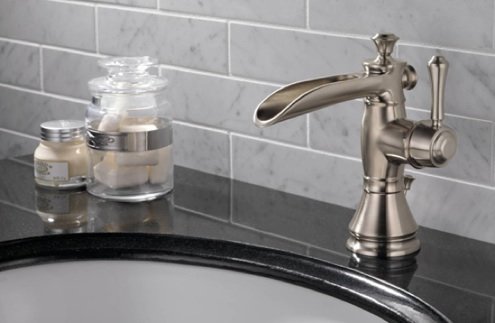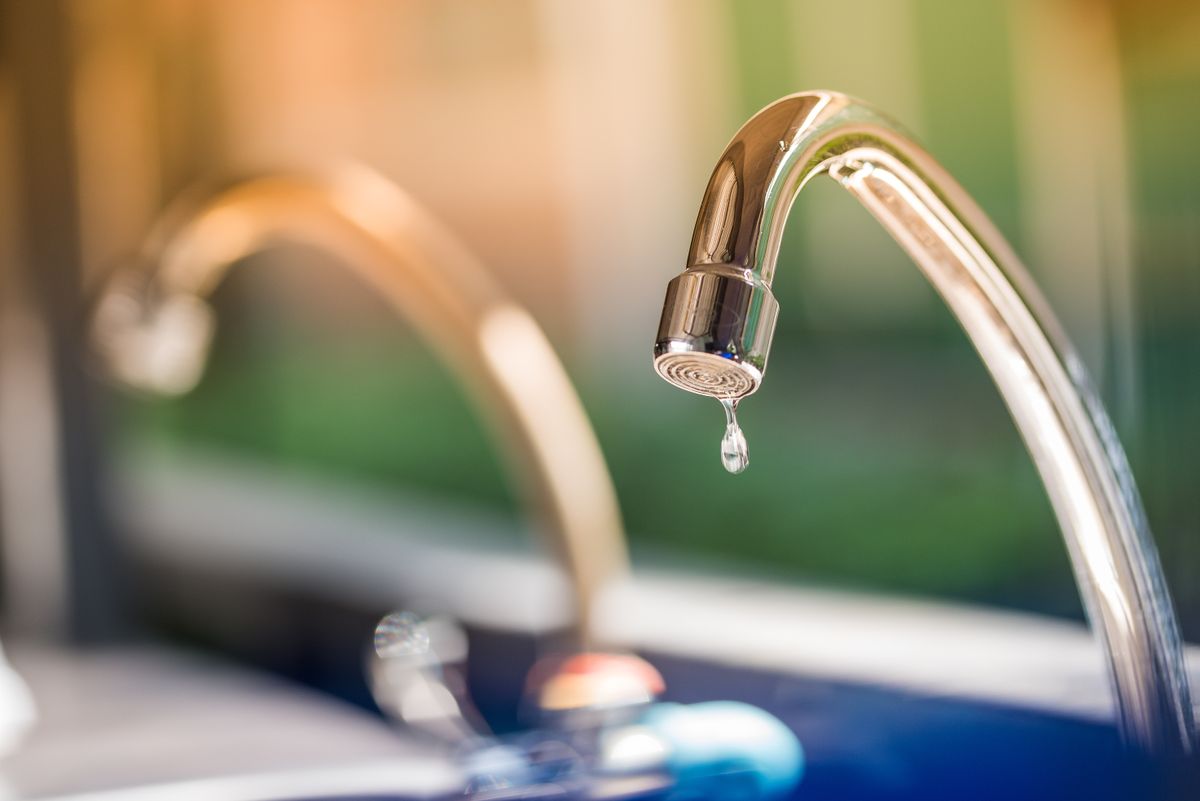This article underneath relating to How to Fix a Dripping or Leaky Faucet is totally intriguing. Check it out for yourself and figure out what you think of it.

Leaking faucets might seem like a small aggravation, yet their influence exceeds simply the nuisance of the audio. From wasting water to sustaining unneeded monetary costs and health and wellness risks, neglecting a dripping faucet can lead to numerous effects. In this short article, we'll delve into why it's critical to address this usual family issue immediately and efficiently.
Wastefulness of Water
Environmental Effect
Dripping faucets add considerably to water waste. According to the Environmental Protection Agency (EPA), a solitary faucet dripping at one drip per secondly can throw away more than 3,000 gallons of water annually. This not just pressures water sources but likewise impacts environments and wild animals depending on them.
Financial Costs
Increased Water Bills
Beyond the ecological impact, dripping faucets can inflate water bills substantially. The collected waste gradually equates into higher energy expenditures, which can have been prevented with timely repair work.
Potential Residential Or Commercial Property Damage
Furthermore, prolonged trickling can result in damage to components and surfaces bordering the faucet. Water buildup can trigger discoloration, rust, and even structural concerns if left unattended, causing additional repair service costs.
Health and wellness Concerns
Mold and Mold Growth
The continuous visibility of moisture from a dripping faucet produces an ideal atmosphere for mold and mildew and mildew development. These fungis not just jeopardize interior air top quality however also present health and wellness risks, specifically for individuals with respiratory system conditions or allergies.
Waterborne Illness
Stagnant water in dripping taps can become a breeding place for microorganisms and other microorganisms, boosting the danger of waterborne diseases. Impurities such as Legionella bacteria thrive in stagnant water, potentially causing major illnesses when consumed or breathed in.
DIY vs. Professional Fixing
Benefits and drawbacks of Do It Yourself Repair
While some might attempt to deal with a leaking tap themselves, DIY fixings include their own collection of difficulties. Without correct knowledge and devices, do it yourself attempts can worsen the issue or result in insufficient repairs, extending the issue.
Benefits of Employing a Specialist Plumber
Hiring a professional plumber makes sure that the underlying source of the trickling tap is addressed effectively. Plumbing technicians have the experience and equipment to identify and repair faucet issues efficiently, conserving time and decreasing the threat of additional damage.
Step-by-Step Guide to Fixing a Dripping Tap
Tools Required
Before attempting to deal with a trickling faucet, collect the needed devices, including an adjustable wrench, screwdrivers, replacement components (such as washers or cartridges), and plumber's tape.
Common Faucet Issues and Their Solutions
Identify the sort of faucet and the details issue creating the drip. Typical problems include damaged washing machines, rusty valve seats, or damaged O-rings. Refer to supplier directions or online tutorials for step-by-step advice on repair services.
Preventive Measures
Routine Upkeep Tips
To prevent dripping taps, carry out regular maintenance such as cleaning aerators, inspecting for leaks, and replacing worn-out parts immediately. In addition, take into consideration mounting water-saving tools or updating to extra efficient components.
Importance of Prompt Fixes
Resolving trickling taps as soon as they're discovered prevents more water wastefulness and prospective damage, inevitably conserving both water and money in the future.
Influence On Residential Or Commercial Property Worth
Understanding of Well-Maintained Residential Or Commercial Property
Keeping a building in good condition, including resolving maintenance concerns like dripping faucets, boosts its perceived worth and worth amongst potential purchasers or lessees.
Influence on Resale Value
Properties with well-kept plumbing components, consisting of taps, command greater resale values in the real estate market. Dealing with leaking faucets can add to a favorable perception throughout building inspections and negotiations.
Environmental Duty
Specific Payment to Preservation
Taking obligation for fixing trickling taps lines up with wider efforts towards water preservation and environmental sustainability. Every individual's activities collectively make a substantial impact on protecting priceless sources.
Lasting Living Practices
By prioritizing prompt repair services and adopting water-saving behaviors, individuals contribute to lasting living methods that profit both present and future generations.
Conclusion
Resolving a dripping tap surpasses simple convenience; it's an important action toward preserving water, minimizing financial expenses, and securing health and wellness and residential property. Whether via do it yourself repair work or professional assistance, taking action to fix trickling faucets is a small yet impactful means to advertise accountable stewardship of resources and add to a much healthier, much more lasting future.
How to Fix a Leaky Faucet: Step-by-Step Repair Guide
A leaky faucet may seem like a simple annoyance, but if it's not fixed promptly, that leak could cost hundreds to potentially thousands. From water damage to mold, mildew, and high water bills, even a tiny leak can be catastrophic if left unattended. Damage like this can even affect the overall value of your home, so it's important to take the right approach for leaky faucet repair. You may need the help of a plumber in some cases, but we've got a few tips you can try on how to fix a leaky faucet before calling the pros.
Four Faucet Types
When you're learning how to fix a leaky faucet, the first step is knowing what kind of faucet you're working with! There are four common types.
Cartridge Faucets
Cartridge faucets come in one- or two-handled varieties. In one-handled cartridge faucets, hot and cold water combines in a single cartridge. In the two-handled versions, hot and cold water are controlled separately and mixed in the faucet.
Ball Faucets
Ball faucets have a single lever you push up and down to adjust the pressure and rotate to change the temperature. A slotted metal ball controls the amount of water allowed into the spout.
Compression Washer Faucets
They're the oldest type of faucet, but they're still used in many homes — especially older ones. Compression faucets have two separate handles that, when turned, raise or lower the washer that seals a water valve. This valve stops water from flowing through the faucet when it is turned off.
Disc Faucets
Disc faucets rarely need to be repaired due to their maintenance-free design. The water flow is controlled by two discs — the upper one raises and lowers against a fixed lower disc, creating a watertight seal. If your disc faucet starts leaking, you may need to replace the seals or clean residue buildup from the inlets.
Fixing a Leaky Faucet
Step 1: Turn Off the Water
Whether you're learning how to fix a leaky bathtub faucet or how to fix a leaky kitchen faucet, always turn off the water supply to your working area when you're fixing a leak. The last thing you want is a flood added to your list of things to fix.
Look for the shutoff valves below your sink or around the tub and turn them clockwise to stop the water flow. If your faucet doesn't have shutoff valves, you may need to turn off the water for the whole house. Check to make sure it's off by turning the faucet on. If nothing comes out, you're ready to start the repair.
Step 2: Take Apart the Faucet
How you disassemble your faucet depends on the type of fixture you have. You can use a flathead screwdriver to remove the caps on top of the handle or handles for cartridge and compression faucets. Inside, you should see handle screws. Unscrew these with a screwdriver to remove the handle.
Disc- and ball-style faucets will typically have an inlet screw near the handle, and removing that will reveal the interior of the faucet.
Detach the Valve Stem
For cartridge- and compression-style faucets, you'll see the inner valve stem or cartridge once you remove the faucet handles. If you have a compression faucet, unscrew the brass valve stem. If you have a cartridge faucet, pull out the cartridge. If your cartridge has been in place for a while, it may require some tools or extra force to remove it due to mineral deposits.
Examine and Replace Parts
Once you've removed the parts, check them out to confirm what needs to be replaced. You may see corroded rubber washers, O-rings, stems, or cartridges. On a ball-style faucet, check the seats and springs for damage.
If you need to repair a leaky disc faucet, check the inlet and seals on the lower disc.
Once you determine what parts must be replaced, visit your local hardware store. Bring the damaged parts with you to ensure you can purchase the correct components to replace them.
Clean Valves and Faucet Cavity
If you've removed a stem or cartridge, you may notice mineral buildup in the faucet's threads. Use white vinegar to clean the valve seat by soaking it for a few minutes, then scrub it away with a soft toothbrush and rinse with warm water. You can also clean the interior of the faucet in the same way.
Reassemble the Faucet
Once your faucet is cleaned and the required parts have been replaced, it's time to reassemble it. Put the pieces back together and slowly turn the water supply back on. Doing this slowly is crucial because too much initial water pressure can damage the new hardware you've just installed.
https://homewarranty.firstam.com/blog/how-to-fix-leaky-faucet

We hope you liked our part on Why Are My Faucets Dripping (And Can I Fix It Myself)?. Thank you for taking the time to read through our short article. I beg you take the opportunity to distribute this write-up if you appreciated it. Thanks so much for your time spent reading it.